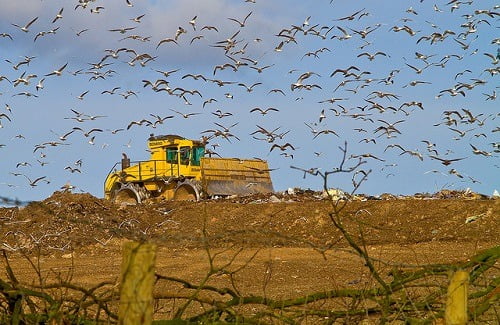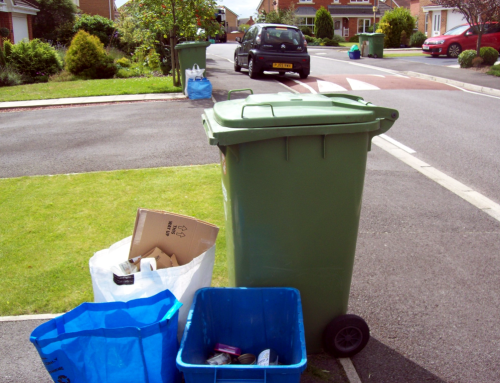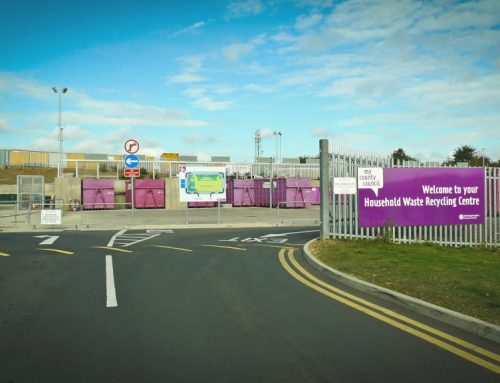by Roy Hunt
8 minute read
I have been dealing with the Environment Agency for four years now, trying to bring about better regulation of a non-hazardous landfill in East Yorkshire. I have reported numerous concerns about the way the site was being operated, but despite twists and turns, virtually nothing was done for the first three years.
I’ve also taken an interest in a number of other sites where serious management problems have led to impacts on local residents. In each case, lack of effective regulation has been at the core of the problems. The site operators that breach the rules certainly deserve their share of blame, but, where enforcement verges on non-existent, I contend that the Agency must hold up its hands.
From this perspective, you might anticipate that I’d be eager for Defra’s recent consultation to result in additional enforcement powers for the Agency to tackle sites that flout the law. In fact, I believe that most problems could be effectively addressed with existing powers.
I start from a simple position where I assume that money is the root cause of waste crime; stop the flow of money and you stop the crime. One industry insider told me, there are three simple (and illegal) ways to make money from waste. The first is to defraud HMRC of Landfill Tax, the second is to take waste in and abandon it and the third is to take waste in and set fire to it. So, let’s look at how each could be prevented without the need for new enforcement powers.
Ghostbusters
The most common ways of evading Landfill Tax are to mis-report waste and to accept “ghost lorries” that don’t appear in the waste returns. Does the Agency lack any powers it would need in order to adopt the following modus operandi?
Stage 1: Analyse waste returns to look for suspicious activity
I am aware of one site that reports in excess of 80% of the waste it accepts as inert. Yet, residents say that few of the lorries that tip there are capable of carrying inert waste; while the few tipper trucks that do visit are so full that, were the contents really “soil and stones”, the density of the material would mean they were completely overloaded. I checked weighbridge records for a site that was receiving large amounts of “soil and stones”, and found that trucks with a load capacity of 20 tonnes were piled high but reported to be carrying as little as 12 to 15 tonnes.
The Agency should also examine where loads originate. It makes no economic sense to transport waste 200 miles unless there is a disposal saving that is greater than the haulage cost. It’s hard to create that kind of incentive legitimately. They also have to be alert for cases where the paper trail goes through a local transfer station even though the waste does not.
Stage 2: Identify any links between these sites and other sites.
For instance, is there a “sister” site owned by the same beneficial owners or their associates? If you find problems with one site, there’s a good reason to look at the others.
Stage 3: Carry out a covert operation to record the number and types of lorry entering these sites
Ideally, registration numbers should be recorded, and an assessment made of likely tonnages and waste types. At one site I am aware of, when residents started recording the registrations of lorries, the number dropped from 80 to 90 per day to less than 15. I wonder why so many trucks were parked up in lay-bys for miles around…

Flipping the bird: badly managed landfills seem able to disregard current enforcement efforts. Photo by James (CC BY 2.0)
Stage 4: Send a couple of inspectors to each suspect site for a day
Make sure they arrive just before the site opens, when there will probably be a queue of lorries waiting at the gate that can be inspected. The later ones are more likely to have the correct paperwork. It’s worth checking whether there are two transfer notes, one correct and one not. Check the records against the results from the covert operation, and look at whether the records match the observations, and whether the number and type of vehicles and loads seen during the inspection differ significantly from the site’s records from previous days, weeks and months.
Stage 5: Take action
If the returns for the day of inspection are markedly different from previous periods, temporarily suspend the operator’s licence until they can devise and implement a method of waste reporting that the Agency is willing to accept. For instance, the Agency might insist on daily monitoring from an independent company, using staff rotation to reduce the risk of bribery.
Such work would incur some costs, as Agency inspectors would need to spend more time out of the office. However, it would be likely to deliver more results than the current system, which seems to involve inspectors arriving at a site in the middle of the day, waiting for a “good” lorry to arrive, checking its contents and leaving.
With reckless abandon
In the context of landfill, abandoning the waste means abandoning the site. If the landfill is (nearly) full, the future is one of cost not profit. You abandon the site to avoid the costs. However, the Agency should hold a Financial Provision (FP) that, according to Article 8 of the European Landfill Directive (LFD), must cover the cost of closure and aftercare. So, where is the problem?
Unfortunately, the Agency appears steadfast in refusing to adopt the FP requirements of the LFD in full. They insist that closure costs (costs incurred after the landfill has been closed for the acceptance of active waste up to the beginning of the aftercare period) need only cover the capping of the last cell. They ignore costs related to installing leachate, landfill gas and surface water management systems, although the European Commission has made it clear they should be included.
The Agency argues that they control the works on landfill sites such that there is only ever one active phase in operation at a time (thus the FP only needs cover the cost of capping one cell) and they ensure that the other environmental systems are installed progressively as the phases are completed. Thus, at the point of closure, there will be no work required other than capping and other peripheral works. Well, that is certainly not the practice and doesn’t appear consistent with the Agency’s own guidance on the calculation of FP.
Uncapped liability
I have been told on several occasions by local officers that the Agency has no powers to force a company to install environmental protection systems progressively through the life of the site. When my local landfill was closed in 2013:
- Not one square metre of capping had been installed and signed off as meeting the Agency specification
- The rudimentary landfill gas system that operated over a small area of the site was unfit for purpose and is to be scrapped.
- The surface water management system exists on paper only
- The leachate management system doesn’t even exist on paper.
With such a huge and persistent disparity between theory and practice, it is little wonder that operators take advantage. But this problem could be solved very simply if the Agency enforced the LFD requirements on FP. The abandonment of a landfill would stop being an issue because the Agency would have the funds to cover the closure costs.
Fire power
The problem with waste fires is that it is difficult to prove arson. Fortunately, serious landfill fires are infrequent, but when they do catch hold, the costs are so great that it would be very difficult to cover the associated costs in any form of FP.
However, for waste transfer stations, RDF facilities and other similar operations, if the FP was set at the level of the cost of disposal (say £100) for every tonne allowed to be stored, this money could be used to clean up the site if the company is unable to. This would also act as a deterrent to setting fires and to abandonment.
My analysis suggests that, if there was a determination to crack down on waste crime, the Agency could do it with no extra powers. Unfortunately, it also suggests that any extra powers will have little impact, when the Agency is so reticent about using those it already has.
When local officers speak to operators they act like Mr. Barrowclough in the TV programme “Porridge”, but when they speak to people concerned about regulatory problems they’re as evasive as Sir Humphrey from “Yes Minister” – even when my local MP, David Davis has been involved in putting the questions. What we need are regulators more in the mould of Mr. Mackay.
Unless the Agency is willing to use whatever powers it has to crack down on wrongdoing in the industry, the criminal element will grow as legitimate operators find that they cannot compete.






Budget cuts and lack of staff to do complete job I bet. Fund more staff. I’ll do the job if needed.
So interesting information about the waste here! I knew that there is a big problem with the waste in the landfill but I had no idea that the situation is so serious! Thank you for this article!
Emma Pierce